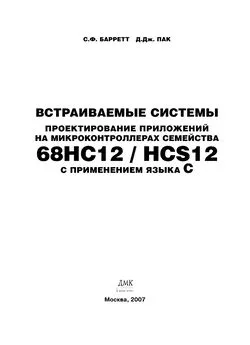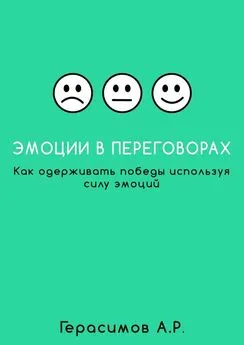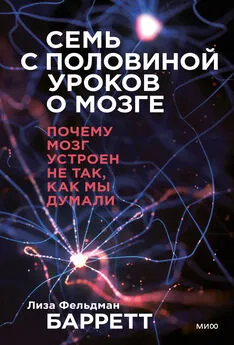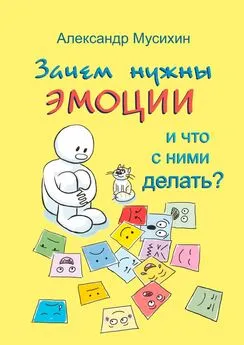Лиза Барретт - Как рождаются эмоции
- Название:Как рождаются эмоции
- Автор:
- Жанр:
- Издательство:Манн, Иванов и Фербер
- Год:2018
- Город:Москва
- ISBN:нет данных
- Рейтинг:
- Избранное:Добавить в избранное
-
Отзывы:
-
Ваша оценка:
Лиза Барретт - Как рождаются эмоции краткое содержание
Эта книга совершает революцию в понимании эмоций, разума и мозга. Вас ждет захватывающее путешествие по удивительным маршрутам, с помощью которых мозг создает вашу эмоциональную жизнь. Вы научитесь по-новому смотреть на эмоции, свои взаимоотношения с людьми и в конечном счете на самих себя. На русском языке публикуется впервые.
Как рождаются эмоции - читать онлайн бесплатно ознакомительный отрывок
Интервал:
Закладка:
Stanton, Annette L., Sharon Danoff-Burg, Christine L. Cameron, Michelle Bishop, Charlotte A. Collins, Sarah B. Kirk, Lisa A. Sworowski, and Robert Twillman. 2000. “Emotionally Expressive Coping Predicts Psychological and Physical Adjustment to Breast Cancer.” Journal of Consulting and Clinical Psychology 68 (5): 875.
Stanton, Annette L., Sharon Danoff-Burg, and Melissa E. Huggins. 2002. “The First Year After Breast Cancer Diagnosis: Hope and Coping Strategies as Predictors of Adjustment.” Psycho-Oncology 11 (2): 93–102.
Steiner, Adam P., and A. David Redish. 2014. “Behavioral and Neurophysiological Correlates of Regret in Rat Decision-Making on a Neuroeconomic Task.” Nature Neuroscience 17 (7): 995–1002.
Stellar, Jennifer E., Neha John-Henderson, Craig L. Anderson, Amie M. Gordon, Galen D. McNeil, and Dacher Keltner. 2015. “Positive Affect and Markers of Inflammation: Discrete Positive Emotions Predict Lower Levels of Inflammatory Cytokines.” Emotion 15 (2): 129–133.
Stephens, C. L., I. C. Christie, and B. H. Friedman. 2010. “Autonomic Specificity of Basic Emotions: Evidence from Pattern Classification and Cluster Analysis.” Biological Psychology 84 (3): 463–473.
Sterling, Peter. 2012. “Allostasis: A Model of Predictive Regulation.” Physiology and Behavior 106 (1): 5–15.
Sterling, Peter, and Simon Laughlin. 2015. Principles of Neural Design . Cambridge, MA: MIT Press.
Stevenson, Seth. 2015. “Tsarnaev’s Smirk.” Slate.com , April 21. http://www.slate.com/articles/news_and_politics/dispatches/2015/04/tsarnaev_trial_sentencing_phase_prosecutor_makes_case_that_dzhokhar_tsarnaev.html.
Stolk, Arjen, Lennart Verhagen, and Ivan Toni. 2016. “Conceptual Alignment: How Brains Achieve Mutual Understanding.” Trends in Cognitive Sciences 20 (3): 180–191.
Striedter, Georg F. 2006. “Précis of Principles of Brain Evolution.” Behavioral and Brain Sciences 29 (1): 1–12.
Styron, William. 2010. Darkness Visible: A Memoir of Madness . New York: Open Road Media.
Sullivan, Michael J. L., Mary E. Lynch, and A. J. Clark. 2005. “Dimensions of Catastrophic Thinking Associated with Pain Experience and Disability in Patients with Neuropathic Pain Conditions.” Pain 113 (3): 310–315.
Susskind, Joshua M., Daniel H. Lee, Andrée Cusi, Roman Feiman, Wojtek Grabski, and Adam K. Anderson. 2008. “Expressing Fear Enhances Sensory Acquisition.” Nature Neuroscience 11 (7): 843–850.
Suvak, M. K., and L. F. Barrett. 2011. “Considering PTSD from the Perspective of Brain Processes: A Psychological Construction Analysis.” Journal of Traumatic Stress 24: 3–24.
Suvak, M. K., B. T. Litz, D. M. Sloan, M. C. Zanarini, L. F. Barrett, and S. G. Hofmann. 2011. “Emotional Granularity and Borderline Personality Disorder.” Journal of Abnormal Psychology 120 (2): 414–426.
Swanson, Larry W. 2012. Brain Architecture: Understanding the Basic Plan . New York: Oxford University Press.
Tabibnia, Golnaz, Matthew D. Lieberman, and Michelle G. Craske. 2008. “The Lasting Effect of Words on Feelings: Words May Facilitate Exposure Effects to Threatening Images.” Emotion 8 (3): 307–317.
Tagkopoulos, Ilias, Yir-Chung Liu, and Saeed Tavazoie. 2008. “Predictive Behavior Within Microbial Genetic Networks.” Science 320 (5881): 1313–1317.
Tamir, Maya. 2009. “What Do People Want to Feel and Why? Pleasure and Utility in Emotion Regulation.” Current Directions in Psychological Science 18 (2): 101–105.
Tanaka, Masayuki. 2011. “Spontaneous Categorization of Natural Objects in Chimpanzees.” In Cognitive Development in Chimpanzees , edited by T. Matsuzawa, M. Tomanaga, and M. Tanaka, 340–367. Tokyo: Springer.
Tang, Yi-Yuan, Britta K. Hölzel, and Michael I. Posner. 2015. “The Neuroscience of Mindfulness Meditation.” Nature Reviews Neuroscience 16 (4): 213–225.
Tassinary, Louis G., and John T. Cacioppo. 1992. “Unobservable Facial Actions and Emotion.” Psychological Science 3 (1): 28–33.
Tassinary, Louis G., John T. Cacioppo, and Eric J. Vanman. 2007. “The Skeletomotor System: Surface Electromyography.” In Handbook of Psychophysiology , 3rd edition, edited by John T. Cacioppo and Louis G. Tassinary, 267–300. New York: Cambridge University Press.
Taumoepeau, Mele, and Ted Ruffman. 2006. “Mother and Infant Talk About Mental States Relates to Desire Language and Emotion Understanding.” Child Development 77 (2): 465–481.
——— . 2008. “Stepping Stones to Others’ Minds: Maternal Talk Relates to Child Mental State Language and Emotion Understanding at 15, 24, and 33 Months.” Child Development 79 (2): 284–302.
TedMed. 2015. “Great Challenges.” http://www.tedmed.com/greatchallenges.
Teicher, Martin H., Susan L. Andersen, Ann Polcari, Carl M. Anderson, and Carryl P. Navalta. 2002. “Developmental Neurobiology of Childhood Stress and Trauma.” Psychiatric Clinics 25 (2): 397–426.
Teicher, Martin H., Susan L. Andersen, Ann Polcari, Carl M. Anderson, Carryl P. Navalta, and Dennis M. Kim. 2003. “The Neurobiological Consequences of Early Stress and Childhood Maltreatment.” Neuroscience and Biobehavioral Reviews 27 (1): 33–44.
Teicher, Martin H., and Jacqueline A. Samson. 2016. “Annual Research Review: Enduring Neurobiological Effects of Childhood Abuse and Neglect.” Journal of Child Psychology and Psychiatry 57 (3): 241–266.
Teicher, Martin H., Jacqueline A. Samson, Ann Polcari, and Cynthia E. McGreenery. 2006. “Sticks, Stones, and Hurtful Words: Relative Effects of Various Forms of Childhood Maltreatment.” American Journal of Psychiatry 163: 993–1000.
Tejero-Fernández, Victor, Miguel Membrilla-Mesa, Noelia Galiano-Castillo, and Manuel Arroyo-Morales. 2015. “Immunological Effects of Massage After Exercise: A Systematic Review.” Physical Therapy in Sport 16 (2): 187–192.
Tenenbaum, Joshua B., Charles Kemp, Thomas L. Griffiths, and Noah D. Goodman. 2011. “How to Grow a Mind: Statistics, Structure, and Abstraction.” Science 331 (6022): 1279–1285.
Tiedens, Larissa Z. 2001. “Anger and Advancement Versus Sadness and Subjugation: The Effect of Negative Emotion Expressions on Social Status Conferral.” Journal of Personality and Social Psychology 80 (1): 86–94.
Tomasello, Michael. 2014. A Natural History of Human Thinking . Cambridge, MA: Harvard University Press.
Tomkins, Silvan S., and Robert McCarter. 1964. “What and Where Are the Primary Affects? Some Evidence for a Theory.” Perceptual and Motor Skills 18 (1): 119–158.
Tononi, Giulio, and Gerald M. Edelman. 1998. “Consciousness and Complexity.” Science 282 (5395): 1846–1851.
Touroutoglou, A., E. Bliss-Moreau, J. Zhang, D. Mantini, W. Vanduffel, B. Dickerson, and L. F. Barrett. 2016. “A Ventral Salience Network in the Macaque Brain.” Neuroimage 132: 190–197.
Touroutoglou, A., K. A. Lindquist, B. C. Dickerson, and L. F. Barrett. 2015. “Intrinsic Connectivity in the Human Brain Does Not Reveal Networks for ‘Basic’ Emotions.” Social Cognitive and Affective Neuroscience 10 (9): 1257–1265.
Tovote, Philip, Jonathan Paul Fadok, and Andreas Lüthi. 2015. “Neuronal Circuits for Fear and Anxiety.” Nature Reviews Neuroscience 16 (6): 317–331.
Tracey, Irene. 2010. “Getting the Pain You Expect: Mechanisms of Placebo, Nocebo and Reappraisal Effects in Humans.” Nature Medicine 16 (11): 1277–1283.
Tracy, Jessica L., and Daniel Randles. 2011. “Four Models of Basic Emotions: A Review of Ekman and Cordaro, Izard, Levenson, and Panksepp and Watt.” Emotion Review 3 (4): 397–405.
Tranel, Daniel, Greg Gullickson, Margaret Koch, and Ralph Adolphs. 2006. “Altered Experience of Emotion Following Bilateral Amygdala Damage.” Cognitive Neuropsychiatry 11 (3): 219–232.
Traub, Richard J., Dong-Yuan Cao, Jane Karpowicz, Sangeeta Pandya, Yaping Ji, Susan G. Dorsey, and Dean Dessem. 2014. “A Clinically Relevant Animal Model of Temporomandibular Disorder and Irritable Bowel Syndrome Comorbidity.” Journal of Pain 15 (9): 956–966.
Triandis, Harry Charalambos. 1994. Culture and Social Behavior . New York: McGraw-Hill.
Trivedi, Bijal P. 2004. “‘Hot Tub Monkeys’ Offer Eye on Nonhuman ‘Culture’.” National Geographic News , February 6. http://news.nationalgeographic.com/news/2004/02/0206_040206_tvmacaques.html.
Trumble, Angus. 2004. A Brief History of the Smile . New York: Basic Books.
Tsai, Jeanne L. 2007. “Ideal Affect: Cultural Causes and Behavioral Consequences.” Perspectives on Psychological Science 2 (3): 242–259.
Tsuda, Makoto, Simon Beggs, Michael W. Salter, and Kazuhide Inoue. 2013. “Microglia and Intractable Chronic Pain.” Glia 61 (1): 55–61.
Tucker, Mike, and Rob Ellis. 2001. “The Potentiation of Grasp Types During Visual Object Categorization.” Visual Cognition 8 (6): 769–800.
——— . 2004. “Action Priming by Briefly Presented Objects.” Acta psychologica 116 (2): 185–203.
Turati, Chiara. 2004. “Why Faces Are Not Special to Newborns: An Alternative Account of the Face Preference.” Current Directions in Psychological Science 13 (1): 5–8.
Turcsán, Borbála, Flóra Szánthó, Ádám Miklósi, and Enikő Kubinyi. 2015. “Fetching What the Owner Prefers? Dogs Recognize Disgust and Happiness in Human Behaviour.” Animal Cognition 18 (1): 83–94.
Turkheimer, Eric, Erik Pettersson, and Erin E. Horn. 2014. “A Phenotypic Null Hypothesis for the Genetics of Personality.” Annual Review of Psychology 65: 515–540.
U.S. Census Bureau. 2015. “Families and Living Arrangements.” http://www.census.gov/hhes/families.
Vallacher, Robin R., and Daniel M. Wegner. 1987. “What Do People Think They’re Doing? Action Identification and Human Behavior.” Psychological Review 94 (1): 3–15.
Van de Cruys, Sander, Kris Evers, Ruth Van der Hallen, Lien Van Eylen, Bart Boets, Lee de-Wit, and Johan Wagemans. 2014. “Precise Minds in Uncertain Worlds: Predictive Coding in Autism.” Psychological Review 121 (4): 649–675.
Van den Heuvel, Martijn P., and Olaf Sporns. 2011. “Rich-Club Organization of the Human Connectome.” Journal of Neuroscience 31 (44): 15775–15786.
——— . 2013. “An Anatomical Substrate for Integration Among Functional Networks in Human Cortex.” Journal of Neuroscience 33 (36): 14489–14500.
Van der Laan, L. N., D. T. de Ridder, M. A. Viergever, and P. A. Smeets. 2011. “The First Taste Is Always with the Eyes: A Meta-Analysis on the Neural Correlates of Processing Visual Food Cues.” Neuroimage 55 (1): 296–303.
Van Essen, David C., and Donna Dierker. 2007. “On Navigating the Human Cerebral Cortex: Response to ‘In Praise of Tedious Anatomy’.” Neuroimage 37 (4): 1050–1054.
Vauclair, Jacques, and Joël Fagot. 1996. “Categorization of Alphanumeric Characters by Guinea Baboons: Within—and Between—Class Stimulus.” Cahiers de psychologie cognitive 15 (5): 449–462.
Vernon, Michael L., Shir Atzil, Paula Pietromonaco, and Lisa Feldman Barrett. 2016. “Love Is a Drug: Parallel Neural Mechanisms in Love and Drug Addiction.” Unpublished manuscript, University of Massachusetts, Amherst.
Читать дальшеИнтервал:
Закладка:










